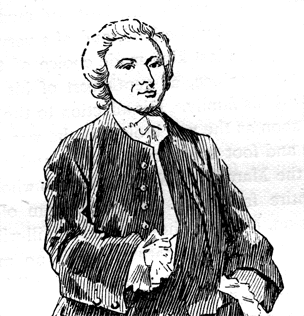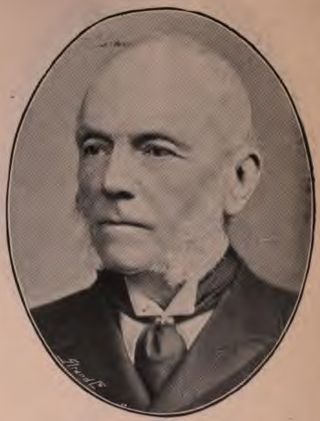
Baron Widdrington, of Blankney in the County of Lincoln, was a title in the Peerage of England. It was created on 2 November 1643 for Sir William Widdrington, 1st Baronet. He had already been created a baronet, of Widdrington in the County of Northumberland, in the Baronetage of England on 9 July 1642. The Widdringtons were an ancient Northumbrian family who gave their name to the village, near Morpeth, Northumberland. In the 17th century the family were strongly Royalist. William Widdrington, 4th Baron Widdrington, joined Derwentwater and other Northumberland families in the Jacobite rising of 1715 and was captured at the Battle of Preston (1715). As a consequence of the subsequent attainder of the brothers, the Widdrington estates were sequestered and sold by the Crown, and the title was forfeited. Of their three great houses no traces now remain: Widdrington Castle was demolished in 1862 ; Stella Hall, Blaydon on Tyne, was demolished in 1954; and Blankney Hall, Lincolnshire suffered the same fate in 1960. Some of the family paintings passed to the Cook/Widdrington family of Newton Hall, and those were auctioned by Christie’s in 2010. The important collection of family portraits passed into the possession of the Towneley family through Mary Widdrington, daughter of the third Baron. These were sold at various auctions after Towneley Hall was emptied in about 1902. A few have since been donated to Towneley Hall, and four were donated to Stonyhurst College in the 19th century.
There have been ten baronetcies created for persons with the surname Browne, six in the Baronetage of Great Britain, three in the Baronetage of Ireland and one in the Baronetage of Nova Scotia. Only one creation is extant as of 2010. Three of the creations were for members of the Browne family headed by the Viscount Montagu.
There have been four baronetcies created for persons with the surname Leslie, one in the Baronetage of Nova Scotia, one in the Baronetage of Ireland, one in the Baronetage of Great Britain and one in the Baronetage of the United Kingdom. Three of the creations are extant as of 2010.
There have been three baronetcies created for persons with the surname Fleming, one in the Baronetage of Nova Scotia, one in the Baronetage of England and one in the Baronetage of Great Britain. As of 2008 one creation is extant, one extinct and one either extinct or dormant.
There have been two baronetcies created for people with the surname Delaval.

There have been twenty one baronetcies created for persons with the surname Williams, eight in the Baronetage of England, three in the Baronetage of Great Britain and ten in the Baronetage of the United Kingdom. Only six of the creations are extant as of 2017.

There have been four baronetcies created for persons with the surname Hope, three in the Baronetage of Nova Scotia and one in the Baronetage of the United Kingdom. As of 2010 one creation is extant, one dormant and two extinct.
There have been seven baronetcies created for persons with the surname Sinclair, six in the Baronetage of Nova Scotia and one in the Baronetage of Great Britain. Four of the creations are extant as of 2008.
There have been four baronetcies created for persons with the surname Willoughby, three in the Baronetage of England and one in the Baronetage of Great Britain. One creation is extant as of 2008.
There have been three baronetcies created for persons with the surname Foulis, one in the Baronetage of England and two in the Baronetage of Nova Scotia.
There have been three baronetcies created for members of the Ogilvy family, all in the Baronetage of Nova Scotia. As of 2008 one creation is extant while two are either extinct or dormant.
There have been four baronetcies created for persons with the surname Hay, all in the Baronetage of Nova Scotia. Two creations are extinct, one dormant and one extant. A fifth baronetcy in the Jacobite Peerage, although theoretically extant, is not recognised by the Lyon Office.
There have been four baronetcies created for persons with the surname Seton, all in the Baronetage of Nova Scotia. As of 2008 one creation is extant, one dormant and two extinct.
The Nicolson baronets refer to one of four baronetcies created for persons with the surname Nicolson, all in the Baronetage of Nova Scotia. Two of the creations remain extant as of 2008.

There have been five baronetcies created for persons with the surname Kennedy, one in the Baronetage of Ireland, three in the Baronetage of Nova Scotia and one in the Baronetage of the United Kingdom. One creation is extant as of 2010.
There have been three baronetcies created for persons with the surname Hume, two in the Baronetage of Nova Scotia and one in the Baronetage of Great Britain. One creations is dormant while two are extinct.

There have been five baronetcies created for persons with the surname Morgan, two in the Baronetage of England, one in the Baronetage of Great Britain and two in the Baronetage of the United Kingdom. All five creations are extinct.

There have been three baronetcies created for persons with the surname Meredith, one in the Baronetage of England, one in the Baronetage of Nova Scotia and one in the Baronetage of the United Kingdom. Two of the creations are extinct while one is dormant.
There have been four baronetcies created for persons with the surname Bennet, two in the Baronetage of England and two in the Baronetage of Nova Scotia. All four creations are extinct.
There have been three baronetcies created for persons with the surname Fortescue, one in the Baronetage of Nova Scotia and two in the Baronetage of England. Two of the creations are extinct while the other is dormant.






